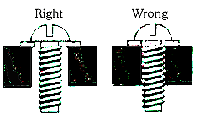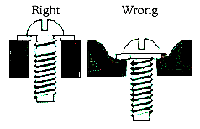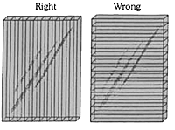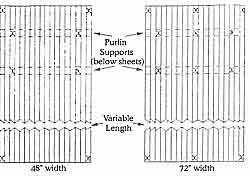



| Verolite® Polycarbonate Availability | |||||
|---|---|---|---|---|---|
| Thickness | 4.5 mm | 6 mm | 8 mm | 10 mm | 16 mm |
| Stock Widths (inches) | 48, 72 | 48, 72 | 48 | 48 | |
| Standard Width (inches) | 48, 72, 80* | 48, 72, 80* | 48, 72, 80* | 48, 72, 80* | 48 |
| Spacing between flutes (mm) | 7 | 7 | 10 | 10 | 18 |
| Tensile at break (PSI) | 9,200 | |
| Elongation at yield (%) | 6 | |
| Elongation at break (%) | 110 | |
| Density (gm/cm3) | 1.2 | |
| Deflection temperature at 66 PSI | 275ºF | |
| Heat distortion temperature | 275ºF | |
| ASTM D-635 rate of burn | 1.65 in/min. |
| Light Transmission | |||||
|---|---|---|---|---|---|
| Thickness | 4.5 mm | 6 mm | 8 mm | 10 mm | 16 mm |
| Clear | 82% | 80% | 80% | 79% | 78% |
| Bronze | 42% | 42% | 42% | 42% | 42% |
| Opal | 44% | 44% | 44% | 44% | 44% |
| Grey | 42% | 42% | 42% | 42% | 42% |
| Insulation values | |||||
|---|---|---|---|---|---|
| Thickness | 4.5 mm | 6 mm | 8 mm | 10 mm | 16 mm |
| R-Factor | 1.47 | 1.55 | 1.57 | 1.63 | 1.83 |
| U-Factor (BTU/hr/ft2/°F | 0.68 | 0.645 | 0.635 | 0.615 | 0.545 |
| Bending Radii | |||||
|---|---|---|---|---|---|
| Sheet Thickness | 4.5 mm | 6 mm | 8 mm | 10 mm | 16 mm |
| Min. Bend Radius (feet & inches) |
2'2" | 2'2" | 2'11" | 4'11" | 7'10" |
| Flammability The resins used to make Verolite® polycarbonate are specially developed for excellent flame retardant properties. |
| Insulation The twin wall profile gives effective heat-loss reductions when used instead of regular glass. Savings of up to 50% have been documented. Insulation values increase with thicker profiles, as noted in the Standards Table. |
| Storage of Panels The polycarbonate sheets should be stacked on a solid flat surface. Store out of direct sun to avoid accumulated heat effects. Cover for protection. Never use flexible vinyl sheet as a cover a the plasticizers may react with the polycarbonate. Supported sloped stacking is recommended, but sheets may be stacked up to 3' high on a flat, even supported surface. |
| Protective Film All Verolite® polycarbonate panels are supplied with a protective PE film on both sides which should be kept on until the panel is fastened. The U.V. protected side is to be faced towards the sun and is marked with printed film. |
| Cleaning of Installed Panels Verolite® polycarbonate should be protected from abrasion by the installer. After installation, panels should be washed with mild soap or detergent and lukewarm water using only a clean sponge or soft cloth, then rinsed with clean water. Never use abrasive cleaners, solvents or sharp tools on the sheets. Wipe dry with a soft cloth to avoid water spotting in hard water areas. Fresh paint, grease, and smeared glazing compounds may be removed before drying by rubbing lightly with a good grade of naptha or isopropyl alcohol followed by a final wash with mild soap or detergent and final rinse. Contact the manufacturer for reference to specific cleaner brands. |
| Fabrication Verolite® polycarbonate wont crack or split when cut or drilled. Able to stand extreme abuse, its impact strength is 200 times greater than glass and 10 times greater than acrylic. Verolite® polycarbonate may be cut using a circular saw with a fine tooth blade for sizes up to 16 mm, with a razor knife cut on both sides of the material. Compressed air may be used to remove dust from the channels. |
| Allow for proper expansion in all drill holes. Do not drill within 1 1/2" from the edge of the sheet. |  |
| When fastening screws, do not tighten below the surface of the panel. |  |
| Chemical Resistance Polycarbonate panels are resistant to some chemical and products non-resistant to others. Resistance can be effected by the chemical concentration, duration of exposure, degree of pressure and temperature at time of contact. The following chemicals are considered safe for use with Verolite Polycarbonate Sheet | ||
| Acetic Acid | Carbon Monoxide | Mercury |
| Ammonium Chloride | Citric Acid - 10% | Methane |
| Antimony Chloride | Copper Sulphate | Oxygen |
| Borax in Water | Ethyl Alcohol - 95% | Ozone |
| Butane | Ethylene Glycol | Sulphur |
| Calcium Chloride | Formain - 10% | Urea |
| Calcium Hypochloride | Hydrochloric Acid - 20% | Water |
| Carbon Dioxide | Hydroflouric Acid - 5% | |
| The following require caution: | ||
| Cyclohexone | Glycerine | Sulphur Dioxide |
| Diesel Oil | HeatingFuel | Turpentine |
| Formic Acid | Jet Fuel | |
| Gasoline | Perchloric Acid-Conc. | |
| The following will attack polycarbonate: | ||
| Acetone | Caustic Soda | Methyl Ethyl Ketone |
| Acrylonitrile | Chloroform | Perchloroethylene |
| Ammonia | Dimethyl Formamide | Styrene |
| Amyl Acetate | Hydrochloric Acid-Conc. | Toluol |
| Benzene | Hydroflouric Acid-Conc. | Sulphuric Acid-Conc. |
| Bromine | Iodine | Xylene |
| Butyl Acetate | Methanol | |
| Installation - Verolite® Polycarbonate |
| Easy Instructions: 1. Always install the polycarbonate sheets with the flutes oriented vertically. When used as a roof covering, design with at least a 5" slope, never horizontal. 2. Remember to allow for expansion and contraction in every installation. Bronze and grey panels change more in size. Use extrusions that allow for sufficient edge engagement plus the expansion allowance. 3. Polycarbonate panels can be cut with protective masking in place with a fine tooth saw or sharp knife. Remember to remove the masking prior to final fixing in place. Chips from cutting should be blown out of the flutes. 4. The specially treated weather side is identified on the masking. This side must always face the exterior. 5. In vertical installations, the top flutes should be capped with an extrusion or tape and the bottom left open for drainage. |
 |
| 6. Exposed top and bottom ends of a sheet must always be sealed by means of the proper polycarbonate "U" profiles or an adhesive aluminum tape to prevent dust and dirt penetrating inside of the ribs. |
| There are many aluminum and polycarbonate glazing systems available for use with Verolite. Polycarbonate extrusions are made from the same material as the Verolite® sheets. They are available in several profiles including end caps and joining "H" shapes. Also available is a two-piece joining extrusion which consists of a base, which is fastened to the frame and a cap which snaps into place to hold the sheets. These profiles are non-structural and depend on the frame of the structure for support. |
| It is advisable to drill small weep holes every 12 inches in the bottom of the "U" profile for condensation drainage. |  |
 |
Extruded ribs shall be installed in a vertical direction for drainage.Glazing sheets should be joined by Verolite extruded polycarbonate profiles and be installed with their protective U.V. stabilized surface towards the exterior. |
| Verolite® polycarbonate should not be used with PVC profiles, however a variety of aluminum systems may be used. Consult with your local distributor for approved systems.The use of horizontal bars should be avoided. Instead, order Verolite® in the proper length (up to 48 feet). For proper application of Verolite® polycarbonate in roofing conditions, a slope of at least 5° is required. | |
| Fastening For proper point fastening, 1" neoprene bonded washers should be used with screws. | |
 |
|
| 48 inch wide sheets should be fastened to supports at all four corners, and at points 6" in from the edges of each purlin support. | 72 inch wide sheets should be fastened at all four corners, and at points 6" in from the edges of each purlin support and in the center of the purlin supports. |
| Thermal Expansion All polycarbonate materials expand and contract with changes in the temperature. The thermal expansion factor (ASTM D-696) is 3.9 x 10-5. When using extruded channels for installation it is important that the channel offers sufficient edge engagement to hold the sheet secure.Allow for thermal expansion during installation at a rate of 1/8" per 3 feet at 100° F temperature differentials in both width and length of the sheet. Bronze panels will require an additional 30% space. |
 |
| Sealants Use silicone sealants compatible with polycarbonate such as: #999-A with Primer, Dow Corning Corp., Mississauga, Ont. & Midland Mich. or Silglaze N Gesil N, General Electric Co., Waterford, NY. (Always check compatibility to polycarbonates before using elastometric adhesive and soft gaskets for dry installation system.) |
| Arch Bends Minimum bend radius for cold forming Verolite® polycarbonate sheets in an arched application: 4.5 mm/22"; 6.0 mm/24"; 8.0 mm/32"; 10.0 mm/40", and 16.0 mm/96". |  |
| Bending Radii Verolite polycarbonate panels can be readily cold formed to many bending radii and can be fabricated on site to precise dimensions. It is important to avoid over tensing of the sheet, therefore, the minimum bending radius must be 150 times the thickness of the panel. Minimum Bending Radius = Ft./1 |
| Bending Radii | |||||
|---|---|---|---|---|---|
| Sheet Thickness | 4.5 mm | 6 mm | 8 mm | 10 mm | 16 mm |
| Min. Bend Radius (feet & inches) |
2'2" | 2'2" | 2'11" | 4'11" | 7'10" |
| LoadingMaximum spacing of Purlins (in inches) | ||||
|---|---|---|---|---|
| Load | 6 mm | 8 mm | 10 mm | 16 mm |
| 15 psf | 48 | 50 | 90 | 122 |
| 25 psf | 30 | 38 | 48 | 122 |
| 35 psf | 26 | 36 | 40 | 120 |
| 45 psf | 24 | 28 | 36 | 100 |
Load Resistance for Verolite Polycarbonate This diagram is valid only when the conditions outlined below are followed.
|
| Recommended Loading for Verolite Polycarbonate
Guidelines for selecting sheet thickness and Purlin spacing (sheet supported on the four sides) |
| Max. Purlin spacing (inches) Deflection - 1" | ||||
|---|---|---|---|---|
| Load Per Gauge (lb./ft.2) | 4' Width | |||
| 15 | 30 | 45 | 60 | |
| 8 mm, 5/16" | 38" | 28" | 18" | - |
| 10 mm, 3/8" | 45" | 34" | 28" | 12" |
| 16 mm, 5/8" | 75" | 43" | 36" | 30" |
| Load Per Gauge (lb./ft.2) | 6' Width | |||
| 15 | 30 | 45 | 60 | |
| 8 mm, 5/16" | 36" | 26" | 12" | - |
| 10 mm, 3/8" | 44" | 33" | 27" | 24" |
| 16 mm, 5/8" | 60" | 40" | 36" | 30" |
| Max. Purlin Spacing (inches) Deflection - 3" | ||||
| Load Per Gauge (lb./ft.2) | 4' Width | |||
| 15 | 30 | 45 | 60 | |
| 8 mm, 5/16" | 80" | 54" | 46" | 40" |
| 10 mm, 3/8" | 96" | 69" | 58" | 54" |
| 16 mm, 5/8" | 120" | 110" | 104" | 84" |
| Load Per Gauge (lb./ft.2) | 6' Width | |||
| 15 | 30 | 45 | 60 | |
| 8 mm, 5/16" | 60" | 44" | 38" | 34" |
| 10 mm, 3/8" | 80" | 56" | 44" | 38" |
| 16 mm, 5/8" | 120" | 78" | 72" | 62" |